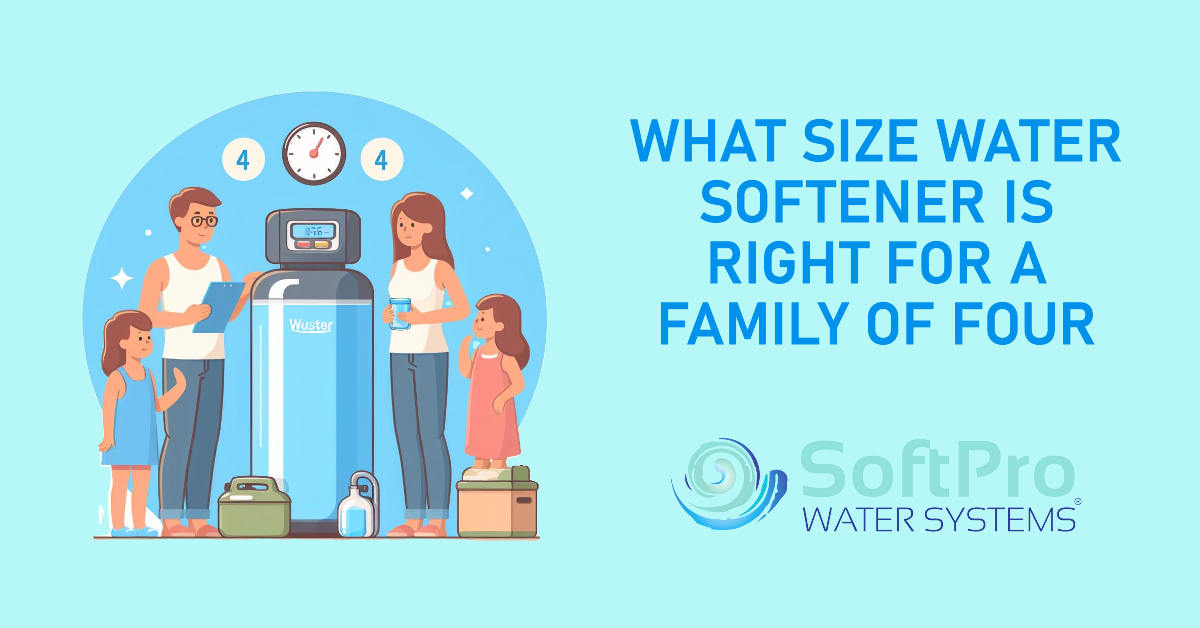What is the Salt Efficiency of an Ion Exchange Water Softener?
Table of Contents
Understanding Salt Efficiency in Ion Exchange Water Softeners
Salt efficiency in ion exchange water softeners refers to their ability to remove hardness minerals from water using the least amount of salt. It's an important factor to consider because it not only impacts operating costs but also minimizes environmental impact through reduced salt discharge.
Why is Salt Used in Water Softeners?
Water hardness arises from dissolved minerals like calcium and magnesium. Ion exchange softeners contain resin beads loaded with sodium ions. When hard water flows through the softener, these minerals swap places with the sodium ions, attaching themselves to the resin and leaving softened water behind. Salt (sodium chloride) is used to replenish the spent resin, allowing it to continue capturing hardness minerals effectively.
How Does Salt Efficiency Work?
The efficiency of salt usage is measured by grains per pound (gpg). This number indicates how many grains of hardness minerals a water softener can remove with one pound of salt. Higher gpg ratings signify better efficiency as it translates to less salt required for the same softening performance.
Measuring Salt Efficiency: Grains Per Pound (gpg) Explained
As mentioned, gpg is the primary metric for evaluating salt efficiency. Here's how it works:
- 1 grain = 17.1 milligrams of hardness minerals
- A typical household uses around 500 gallons of water per day
- Water hardness varies, but let's consider a moderate level of 10 grains per gallon (gpg)
In this scenario, a water softener with an efficiency of 20 gpg would remove 10,000 grains of hardness (500 gallons x 10 gpg) using 500 pounds of salt (10,000 grains / 20 gpg). Conversely, a softener with a lower efficiency of 15 gpg would require 666 pounds of salt (10,000 grains / 15 gpg).
This demonstrates how higher gpg ratings translate to substantial salt savings over time.
Factors Affecting Salt Efficiency
Salt efficiency in your ion exchange water softener isn't a fixed value; it's influenced by several crucial factors. Understanding these variables allows you to optimize your system for maximum efficiency and minimize salt usage:
The Impact of Water Hardness on Salt Usage
The harder your water, the more challenging it is for the softener to remove the minerals, thereby impacting its salt efficiency. This is because harder water requires more sodium ions to exchange with the hardness minerals, leading to increased salt consumption. For example, research by the Water Quality & Health Council indicates that softening water with 20 gpg hardness consumes roughly twice the salt compared to 10 gpg water under similar conditions.
How Regeneration Frequency Influences Efficiency
Regeneration is the process where the spent resin is recharged with sodium ions using a concentrated salt solution (brine). The frequency of regeneration significantly impacts salt efficiency. More frequent regenerations, while ensuring consistently soft water, result in higher salt usage. Conversely, infrequent regeneration can decrease efficiency by allowing the resin to become partially saturated, leading to reduced softening performance and eventually requiring a more extensive regeneration cycle with increased salt consumption.
A study published in the Journal of Environmental Engineering found that optimizing regeneration frequency based on actual water usage can lead to a 20-30% reduction in salt consumption compared to fixed-schedule regenerations.
Understanding the Role of Resin Type and Capacity
The type and capacity of the resin used in your water softener also play a role in salt efficiency. Softeners with higher-quality resin tend to have better exchange capacity, meaning they can capture more hardness minerals before needing regeneration. This translates to fewer regeneration cycles and reduced salt consumption. Additionally, choosing the right softener size with a capacity matching your water usage can contribute to improved efficiency.
According to the Water Quality Association, properly sizing your water softener can save up to 30% in salt usage compared to an undersized or oversized unit.
Optimizing Salt Dosage for Improved Efficiency
Most water softeners allow you to adjust the salt dosage, impacting how much salt is used during regeneration. While it might seem logical to minimize the dosage to save salt, using too little can result in incomplete regeneration, reducing softening performance and potentially damaging the resin. Conversely, using an excessive amount of salt is wasteful and unnecessary. Finding the optimal balance is crucial.
Manufacturer manuals and water treatment professionals can guide you in setting the appropriate salt dosage for your specific water softener and water conditions.
Comparing and Choosing Salt-Efficient Water Softeners
With an understanding of the factors influencing salt efficiency, now you can make informed decisions when choosing a new water softener or optimizing your existing one. Let's explore key points to consider:
Top Water Softener Brands Known for High Efficiency
Several water softener brands consistently rank high in terms of salt efficiency. These include:
- EcoWater: Their EcoLogic system optimizes regeneration based on actual water usage, leading to significant salt savings.
- SoftPro: Known for their advanced control valves and adjustable settings allowing for precise control over salt dosage and regeneration.
- Kinetico: Their non-electric demand regeneration system automatically regenerates only when needed, minimizing salt usage.
Comparing Efficiency Ratings of Different Models
Always look for the grains per pound (gpg) rating when comparing models. Higher gpg ratings indicate better efficiency. Consider reputable reviews and independent testing results to compare actual performance versus manufacturer claims.
Considering Additional Factors Beyond Salt Efficiency
While salt efficiency is important, it's not the only factor to consider when choosing a water softener. Additional factors include:
- Flow rate: Ensure the softener's flow rate meets your household's water demand to avoid pressure drops.
- Capacity: Choose a capacity matching your water usage to avoid frequent regenerations and optimize efficiency.
- Features: Consider features like leak detection, self-cleaning capabilities, and smart controls for added convenience and potential efficiency gains.
Understanding Consumer Reviews and Expert Opinions
Reading user reviews and consulting with water treatment professionals can provide valuable insights into the real-world performance and efficiency of different water softeners. Consider both positive and negative experiences to get a balanced perspective.
Strategies for Improving Salt Efficiency in Your Existing Softener
Even if you don't plan to replace your current water softener right away, there are various strategies you can implement to optimize its salt efficiency and minimize operating costs. Let's explore some practical steps:
Adjusting Regeneration Settings for Optimal Efficiency
Many modern water softeners allow adjusting regeneration frequency and settings. Check your manual or consult a water treatment professional to identify and adjust options like:
- Demand Regeneration: Switch from timer-based to demand-based regeneration, which triggers the process only when necessary based on actual water usage. Studies by the Water Efficiency & Sustainability Coalition suggest demand regeneration can lead to salt savings of up to 50% compared to fixed schedules.
- Metering: Some softeners allow setting the minimum water volume used before triggering regeneration. Setting this to a slightly higher level can reduce unnecessary cycles and salt consumption.
- Efficiency Mode: Many units offer an "efficiency mode" that optimizes regeneration settings for minimal salt usage. Experiment to find the right balance between efficiency and consistent softening performance.
Choosing the Right Type and Amount of Salt
Not all salts are created equal. Using high-quality salt pellets specifically designed for water softeners minimizes impurities and ensures efficient dissolution, preventing wastage. Avoid using rock salt or cheap alternatives that can clog the system and impact performance. Additionally, adjust the salt dosage according to your softener's settings and water hardness. As mentioned earlier, using too little salt can be detrimental, while overdosing is wasteful. Consult your manual or a water treatment professional for guidance.
Maintaining Your Water Softener for Improved Performance
Regular maintenance is crucial for optimal efficiency. Ensure you:
- Clean the brine tank periodically: Buildup of sediment and impurities in the brine tank can hinder salt dissolution and regeneration effectiveness. Follow your softener's cleaning schedule or consult the manual for instructions.
- Check and replace filters regularly: Clogged filters can restrict water flow and impact regeneration, potentially leading to increased salt usage. Replace filters according to the manufacturer's recommendations.
- Monitor water usage: Tracking your water usage patterns can help you fine-tune regeneration settings and adjust salt dosage for optimal efficiency.
Exploring Alternative Regeneration Methods
While traditional brine-based regeneration remains the most common method, some emerging technologies offer potentially even greater salt efficiency:
- Reverse Osmosis (RO): RO systems produce softened water without using salt, but they typically require more maintenance and upfront costs compared to ion exchange softeners.
- Electrolytic Regeneration: These systems use an electric current to regenerate the resin, eliminating the need for salt brine. However, their effectiveness can vary depending on water hardness and require a higher initial investment.
These alternative methods may not be suitable for all scenarios. Carefully consider your water conditions, budget, and needs before exploring these options.
Salt-Free Water Softener Alternatives: Pros and Cons
While ion exchange water softeners dominate the market, salt-free alternatives are gaining traction, particularly for users concerned about environmental impact and salt discharge. Let's explore the pros and cons of these options:
Understanding How Different Alternatives Work
- Magnetic Water Softeners: These devices claim to alter the water's structure, preventing scale buildup without using salt. However, scientific evidence supporting their effectiveness is limited, and studies by organizations like the Water Quality & Health Council find no conclusive proof of their softening capabilities.
- Electronic Water Descalers: These units emit low-frequency electrical signals that supposedly alter the crystal growth of hardness minerals, preventing scale formation. While some users report positive experiences, independent testing often shows limited effectiveness, particularly for harder water.
- Template Assisted Crystallization (TAC): This technology uses templates to induce precipitation of hardness minerals into harmless, easily removable crystals. TAC systems are gaining traction in commercial applications, but residential options remain limited and costly.
Comparing Efficiency and Upfront Costs of Salt-Free Options
Salt-free alternatives generally have higher upfront costs compared to ion exchange softeners. While operating costs are lower due to no salt usage, their effectiveness often varies and may not match the consistent softening performance of traditional systems. Additionally, some alternatives like TAC require regular cartridge replacements, adding to the ongoing cost.
Evaluating Water Usage and Maintenance Requirements
Some salt-free options, like magnetic or electronic units, have low water usage and minimal maintenance needs. However, TAC systems typically require more frequent backwashing and cartridge changes, increasing water consumption and maintenance demands.
Making an Informed Decision Based on Your Needs and Budget
Choosing between a salt-based water softener and a salt-free alternative depends on your priorities and circumstances. Consider these factors:
- Water hardness: Salt-free alternatives may not be effective for very hard water.
- Desired level of softening: If consistent and reliable softening is crucial, a traditional softener might be better.
- Environmental concerns: If minimizing salt discharge is a priority, some salt-free options can be suitable.
- Budget: Salt-free systems typically have higher upfront costs but lower operating costs in the long run.
Conduct thorough research, compare options, and consult water treatment professionals to determine the best solution for your specific needs and water conditions.
Environmental Considerations of Salt-Based Water Softeners
While providing soft water with numerous benefits, salt-based water softeners raise environmental concerns due to salt discharge. Let's dive into the impact and explore potential solutions:
The Impact of Salt Discharge on the Environment
The primary environmental concern with salt-based softeners is the discharge of sodium chloride (NaCl) brine solution during regeneration. This discharge can:
- Increase salinity in freshwater ecosystems: High-salinity levels can harm aquatic life, affecting their physiology and disrupting sensitive ecosystems. A study published in the journal "Environmental Science & Technology" found that increased salinity from softener discharge negatively impacted fish reproduction and survival rates in freshwater environments.
- Affect agricultural productivity: Overly salinated soil can harm crop growth and reduce agricultural yields. A report by the United States Geological Survey highlights how softener discharge can contribute to salinization of agricultural land, potentially impacting food security in certain regions.
- Contaminate groundwater: In areas with vulnerable groundwater resources, improper disposal of brine solution can lead to increased sodium and chloride levels, potentially exceeding safe drinking water standards.
Exploring Sustainable Alternatives and Water Conservation Strategies
To minimize environmental impact while enjoying soft water, consider these options:
- Optimizing salt efficiency: As discussed earlier, implementing strategies like demand-based regeneration, choosing high-efficiency models, and maintaining your softener can significantly reduce salt usage and discharge.
- Brine recycling systems: These systems treat and reuse the spent brine solution, minimizing discharge and potentially even using the extracted salt for other purposes. A study by the Water Research Foundation found that brine recycling systems can reduce salt discharge by up to 90%.
- Exploring salt-free alternatives: While their effectiveness may vary, certain salt-free options like TAC systems can eliminate salt discharge altogether. However, carefully weigh their effectiveness compared to your water hardness and desired level of softening.
- Water conservation practices: Implementing water conservation measures throughout your home can reduce overall water usage, consequently limiting the amount of brine solution generated by your softener.
Balancing Efficiency with Environmental Responsibility
Choosing and operating a water softener involves balancing the benefits of soft water with minimizing environmental impact. By understanding the concerns, exploring sustainable solutions, and adopting responsible water usage practices, you can enjoy soft water while minimizing your environmental footprint.
Conclusion: Understanding Salt Efficiency in Water Softeners
Choosing a water softener isn't just about silky smooth hair and sparkling dishes; it's a balancing act between crystal-clear efficiency and environmental responsibility. Navigating the sea of options can feel daunting, but understanding the intricacies of salt efficiency and its impact on our planet empowers you to make informed decisions.
Key Takeaways:
- Grains per pound (gpg) is your efficiency compass: the higher the gpg, the less salt used per gallon of softened water. Optimizing regeneration frequency, resin type, and salt dosage are your efficiency allies.
- A salty footprint: Brine discharge, a byproduct of traditional softeners, raises environmental concerns. Think ecosystem disruption, agricultural challenges, and even potential groundwater contamination.
- Sustainable solutions abound: Demand-based regeneration, brine recycling, and salt-free alternatives like TAC systems are waves washing away environmental impact.
- Harmony in the balance: Choose an efficient softener, champion sustainable practices like water conservation, and together, we can make soft water flow with environmental responsibility.
Remember:
- Research is key: Compare models based on gpg ratings, features, and operating costs to find your perfect match.
- Seek expert guidance: Water treatment professionals are your oceanographers, navigating the complexities of your specific water conditions and needs.
- Maintenance matters: Regularly tune-up your softener for optimal efficiency and minimize salt usage.
- Sustainable choices lead the way: Explore brine recycling or salt-free options where feasible, and let's make a splash for the environment.
By prioritizing efficiency, embracing sustainable practices, and choosing wisely, we can unlock the benefits of soft water without compromising the well-being of our planet. Let's make every drop count, both in our homes and in the grander scheme of environmental responsibility.




![SoftPro Chlorine+ Carbon Whole House Water Filter to Remove PFAS, Chlorine, Chloramine & Pesticides [City Water Filters Series]](http://www.softprowatersystems.com/cdn/shop/products/softpro-whole-house-chlorine-filter-282008.jpg?v=1758858973&width=140)
![SoftPro Iron Filter - Iron Master AIO - Best Iron Filter for Well Water [Air Injected Water Filter / Katalox]](http://www.softprowatersystems.com/cdn/shop/products/softpro-iron-master-aio-water-filtration-system-remove-iron-sulfur-manganese-using-air-injection-for-optimal-performance-412868.jpg?v=1758859831&width=140)













